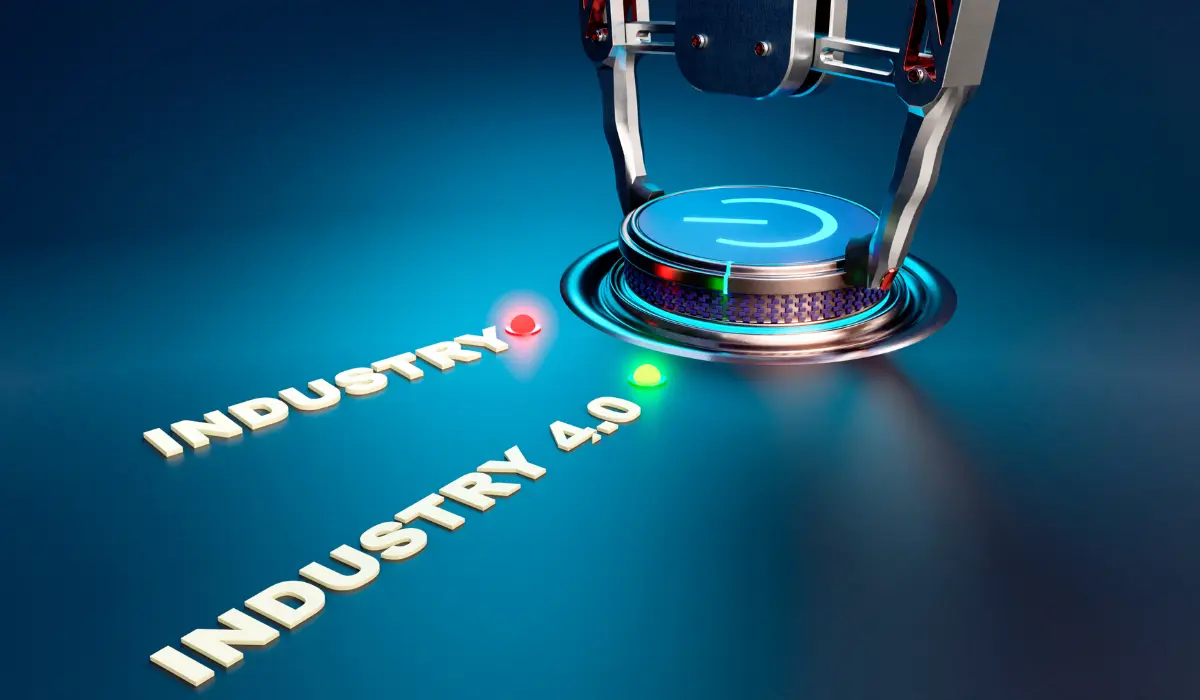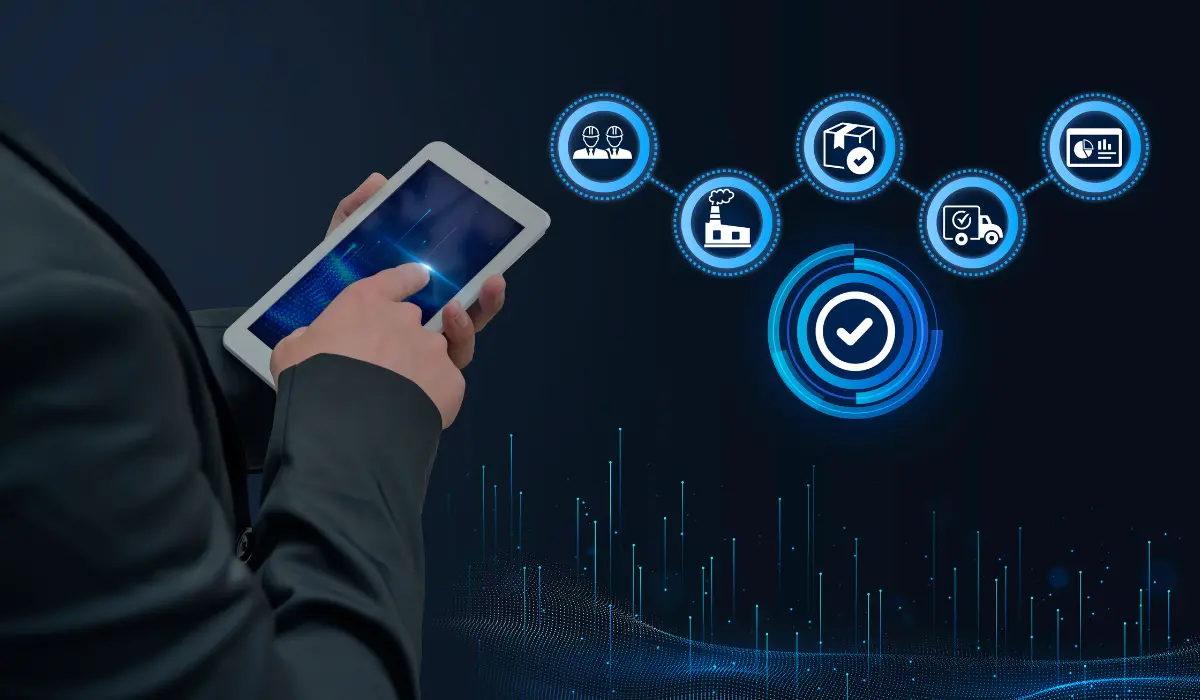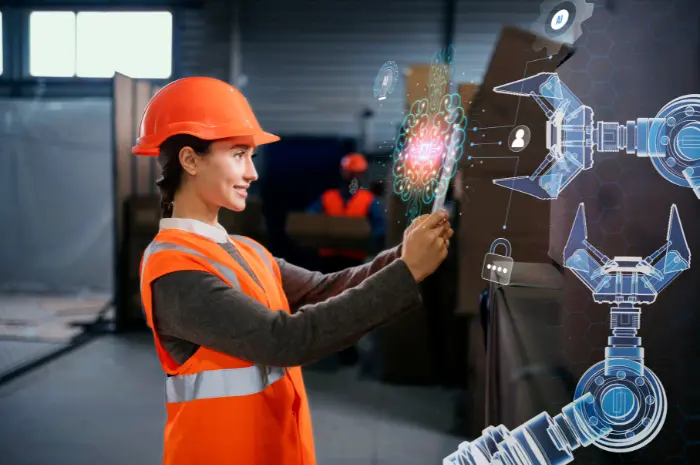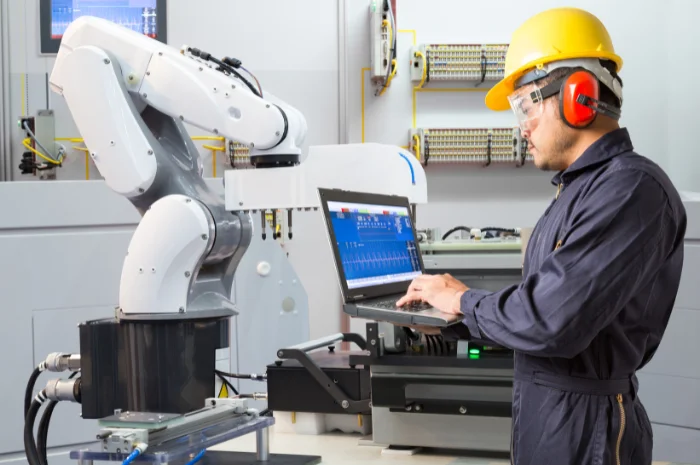In the world of manufacturing, quality is not just a box to check; it is the absolute core of every product that finally reaches a customer’s hands. For decades, businesses have relied on human inspectors and manual processes to ensure that every part, component, or final product meets those all-important standards. But with production lines becoming ridiculously complex and consumer expectations soaring, those traditional quality control methods are hitting their limit.
That is where Artificial Intelligence (AI) steps in. What used to be pure science fiction is now a practical reality on factory floors worldwide. AI-powered quality control has emerged as a genuine breakthrough, completely reshaping how manufacturers monitor, detect, and prevent defects with a level of precision and speed no human could ever match.
This shift is not about replacing people; it is about empowering them with a technology that sees more, learns faster, and ensures every single product is built correctly the first time.
What’s Holding Back Traditional Quality Control in the AI Era?

In classic manufacturing setups, quality control has always been a reactive process. Inspectors check samples from a batch, point out defects, and then send feedback to adjust the process. While it works to an extent, this system leaves too much room for failure. Human fatigue, limited visibility, and the constraints of only checking samples often result in missed defects or severely delayed responses.
Plus, in demanding industries like electronics, automotive, and pharmaceuticals, even the smallest flaw can lead to massive financial losses, safety hazards, or a ruined brand reputation. Today’s manufacturers simply can not afford those kinds of risks in a market where absolute consistency and reliability are their key differentiators.
The problem is clear: How can businesses maintain impeccable quality at an enormous scale without grinding production to a halt? The answer is AI-powered quality control systems, which operate with continuous precision and the power of constant learning.
How AI is Revolutionizing Quality Control

AI-powered systems turn quality control from a manual, reactive chore into an automated, predictive, and truly intelligent process. Here’s a closer look at how it works:
1. Visual Inspection Reinvented with Computer Vision
AI-driven computer vision systems use cameras and deep learning algorithms to examine products at every single stage. Unlike older, rule-based vision systems that break down when lighting or conditions change, modern AI models learn from thousands of images and adapt flawlessly to variations.
These systems can spot imperfections as tiny as a hairline crack or a slight color deviation within milliseconds; something the human eye could easily miss, especially after hours on the job. From identifying scratches on metal parts to validating proper soldering on circuit boards, AI ensures every product is meticulously examined, free from fatigue or human bias.
2. Predictive Quality through Machine Learning
AI does not just find defects, it predicts them. By analyzing patterns from sensors, machines, and historical data, AI can spot the early warning signs of a potential problem. For instance, a subtle vibration in a motor or a slight temperature rise might signal that a machine is about to drift out of spec.
Machine learning models can alert engineers before any defects even appear, allowing for immediate preventive maintenance and timely adjustments. This translates directly to fewer breakdowns, minimal downtime, and consistent product quality, day in, day out.
3. Root Cause Analysis Made Smarter
When a defect pops up, finding the exact cause can feel like searching for a needle in a haystack. AI drastically simplifies this by connecting all the data points. It can quickly correlate a defect with specific machine settings, operator shifts, material batches, or environmental conditions.
This intelligent root cause analysis helps teams take immediate corrective action and, most importantly, prevents similar issues from ever happening again, driving long-term process improvement and reliability.
4. Continuous Learning for Continuous Perfection
The most incredible feature of AI quality control systems is that they never stops learning. Every inspection, every detected anomaly, and every single correction refines the system’s understanding. Over time, it gets sharper, faster, and infinitely more precise.
This continuous learning capability transforms AI agents for manufacturing into a self-improving ecosystem, where every piece of data contributes to higher performance and better overall outcomes.
The Real-World Benefits of AI in Quality Control

The impact of AI in manufacturing is not just theoretical; it’s completely measurable. Businesses adopting AI-driven inspection and analytics systems are reporting:
- Dramatic defect reduction: AI can cut down faulty products by a staggering 40–60%.
- Faster inspections: A process that took hours can now be completed in seconds.
- Cost savings: Less rework, minimal waste, and optimized labor costs.
- Enhanced accuracy: Near-zero false positives and perfectly consistent evaluation.
- Improved customer satisfaction: Better quality means stronger trust and brand loyalty.
Ultimately, AI helps manufacturers achieve the holy grail of production: quality, efficiency, and profitability, all at once.
Which Defects and Processes AI Can Detect
AI can detect a wide range of defects and process irregularities across manufacturing operations with remarkable accuracy. Using advanced computer vision, machine learning, and sensor-based analytics, AI systems can identify surface defects like scratches, dents, cracks, discoloration, and shape deformities that might escape human eyes.
Beyond visual inspection, AI can also detect internal faults such as porosity, misalignment, weld inconsistencies, or dimensional deviations using X-ray, infrared, or ultrasonic data. In terms of processes, AI continuously monitors production parameters, temperature, pressure, speed, and material flow- to spot anomalies before they lead to quality issues.
By learning from patterns and historical data, AI not only detects defects in real time but also predicts potential process failures, helping manufacturers maintain consistent product quality and reduce rework or waste.
The Future is Now: Smarter, Connected, and Autonomous

Looking ahead, the future of AI in quality control is both thrilling and transformative. As factories become hyper-connected through the IoT (Internet of Things) and edge computing, AI systems will operate in true real-time, analyzing data right on the machines and sending instant feedback.
Imagine a fully autonomous factory where machines not only spot defects but automatically correct the process to prevent them, where every production line continuously optimizes itself based on data insights. That future is much closer than we realize.
Manufacturers who embrace AI today will not just produce superior products; they will redefine what efficiency and precision mean for the entire industry.
Conclusion
AI-powered quality control is no longer a futuristic concept; it is the new standard of excellence in modern manufacturing. It perfectly bridges the gap between essential human expertise and unparalleled machine intelligence, creating production systems that are faster, smarter, and infinitely more reliable.
By combining predictive analytics, computer vision, and continuous learning, AI ensures that quality is not something that is inspected after production; it is something that is built into every single stage of it.
In a world where customers demand perfection, AI gives manufacturers the consistent power to deliver it. It truly is a game-changer.
FAQs
What defects can AI detect in manufacturing?
AI can detect a wide range of defects such as surface scratches, dents, cracks, color inconsistencies, dimensional errors, assembly misalignments, and even invisible flaws like coating irregularities or texture deviations, across industries like automotive, electronics, and consumer goods.
How does AI-powered visual inspection work?
AI-powered visual inspection uses machine learning and computer vision algorithms to analyze images or videos of products. The system compares real-time visuals against predefined quality standards, automatically identifying deviations that indicate a defect.
How much can AI reduce defects and rework?
AI-based inspection systems can reduce defects and rework by up to 50–90%, depending on the production setup and data quality. They offer consistent accuracy and eliminate human fatigue, leading to faster detection and fewer production errors.
Which defects can AI catch that humans usually miss?
AI can catch subtle or micro-level defects that are hard for the human eye to detect, like hairline cracks, minute shape distortions, or slight texture variations, especially in high-speed or repetitive production environments.
What data do I need to train an AI inspection model?
You need high-quality labeled images or videos of both defect-free and defective products. The dataset should represent various defect types, lighting conditions, and angles to help the AI learn accurate visual patterns for reliable detection.
What are the data privacy concerns for factory vision systems?
Data privacy concerns arise when factory vision systems capture identifiable information, such as employee faces or proprietary product designs. Ensuring secure data storage, controlled access, and anonymization of sensitive visuals can mitigate these risks.






